[SSI, Atari 8-bits]
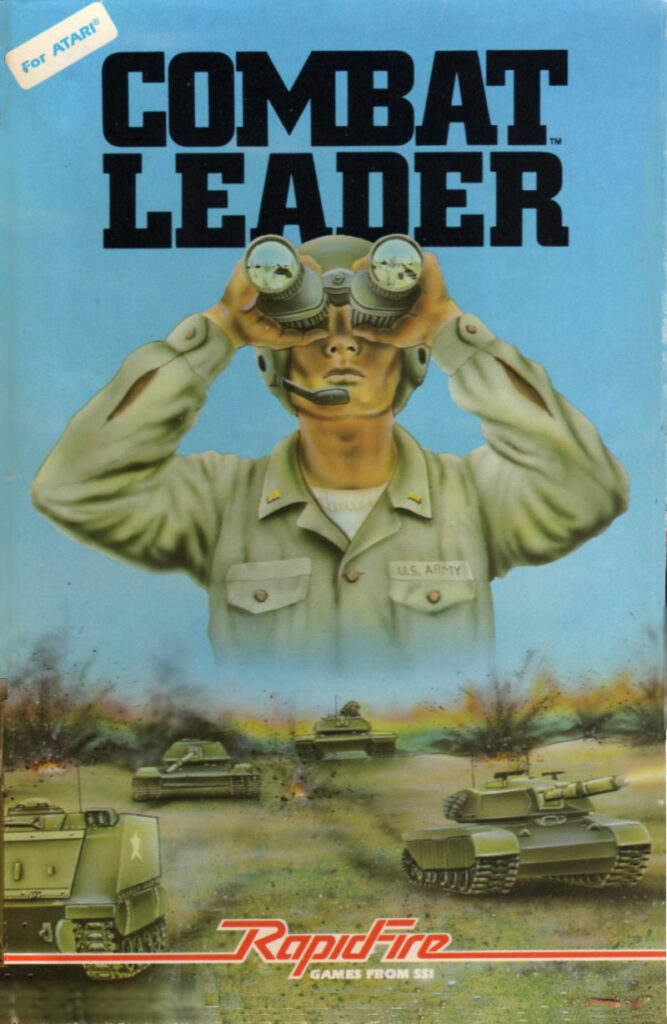
Lieutenant Narwhal, you will be taking command while I personally lead a reconnaissance mission. Your orders are to dig-in and prepare for an enemy attack
Sir Yes Sir ! You won’t regret it Sir ! Let me give my first order Sir !
“To all units ! Here is Lieutenant Narwhal, acting as Company Leader in the area. New order effective immediately : general assault across the front ! Go get them, boys !“
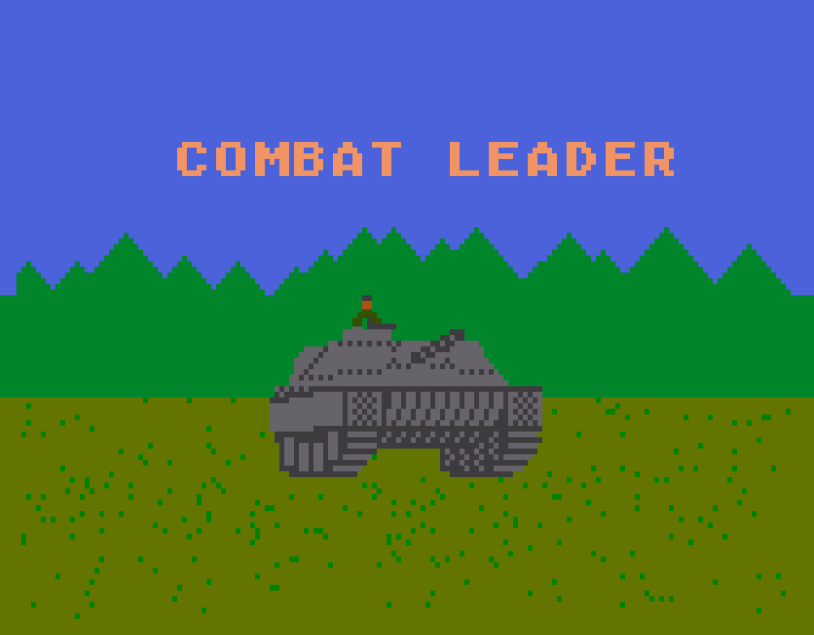
Part I : Platoon Commander
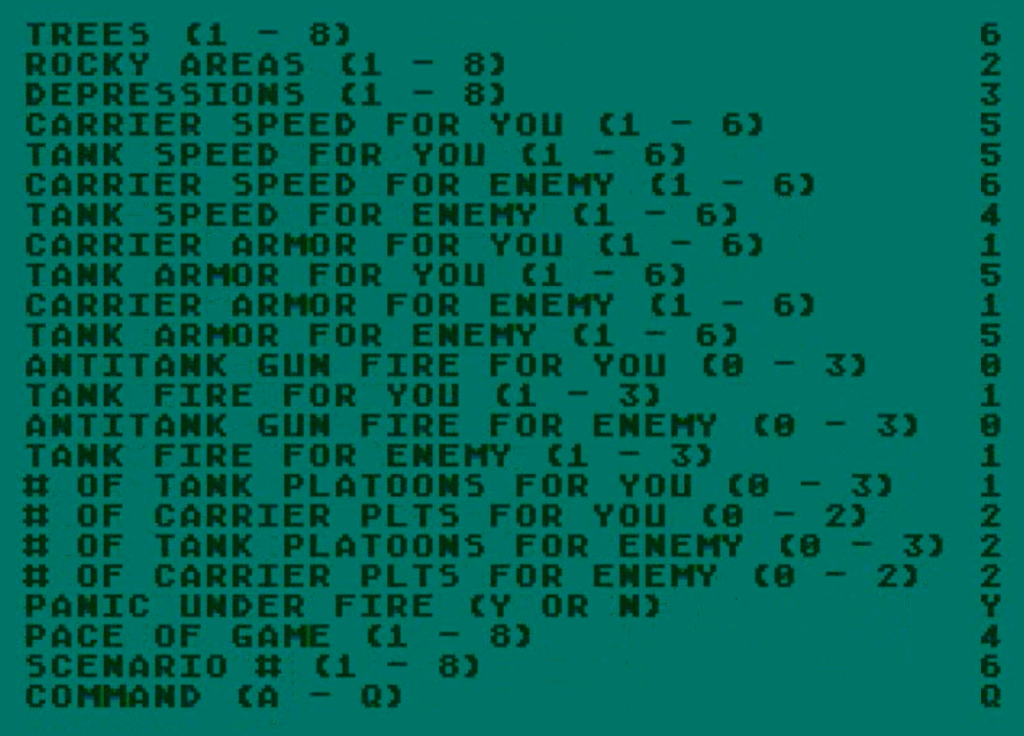
You are not the first person to ask me about my career in the Royal Armoured Corps. A long career, certainly. Well, I have a lot to tell, of course. Hundreds of anecdotes. But we don’t have that much time. Let me tell you about the beginning and the end of my career.
My first battle was in early 1945. The Germans were defeated, but refused to admit it. I was commanding a platoon of 5 brand-new Comet tanks. We had just crossed the Rhine, and our order was to escort two motorized infantry platoons against whatever we would face.
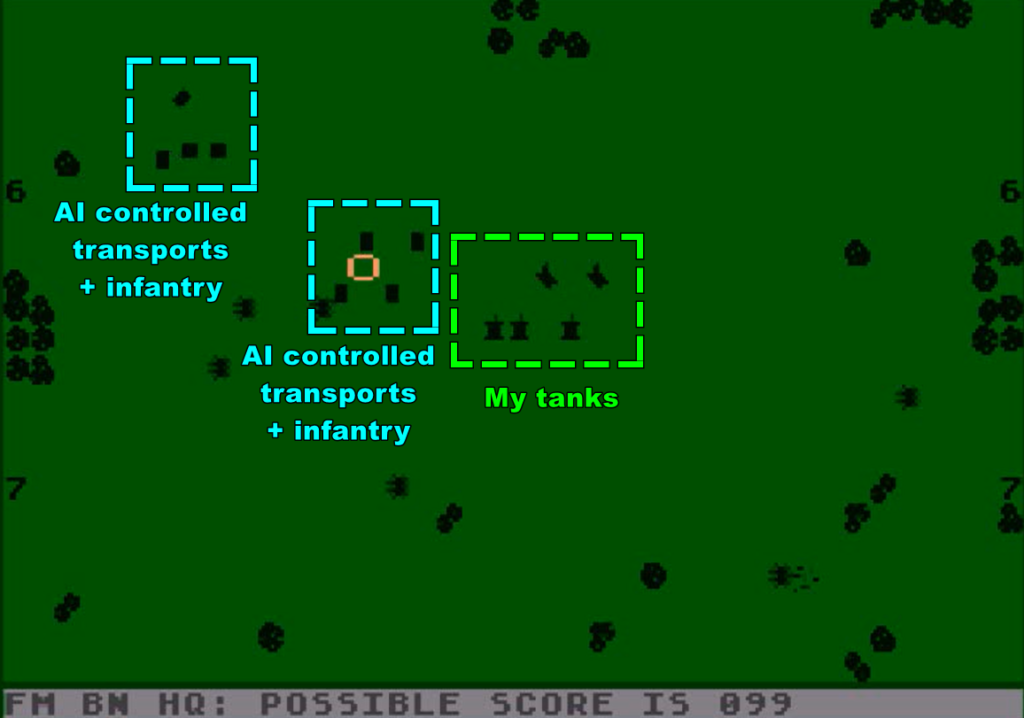
I remember very well the first words I told the infantry platoon commanders upon meeting them…
“HEY, WAIT FOR ME !”
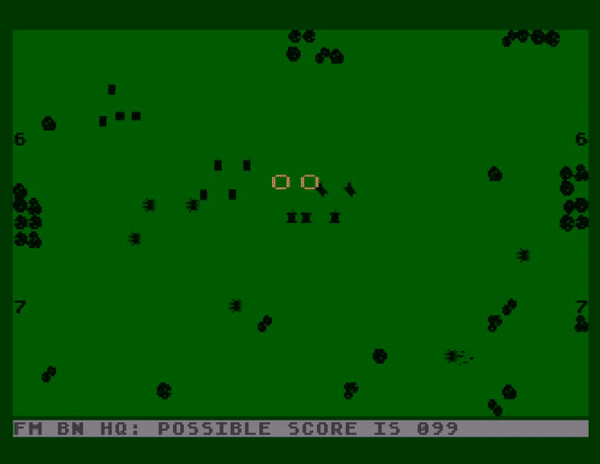
Because, you see, there are combat leaders and combat followers, and that day I was the combat follower. The lads were rushing North with their faster vehicles, and I could not catch up !
They crossed some significant distance like this, with my tanks hot on their heels, until we reached a large hill :
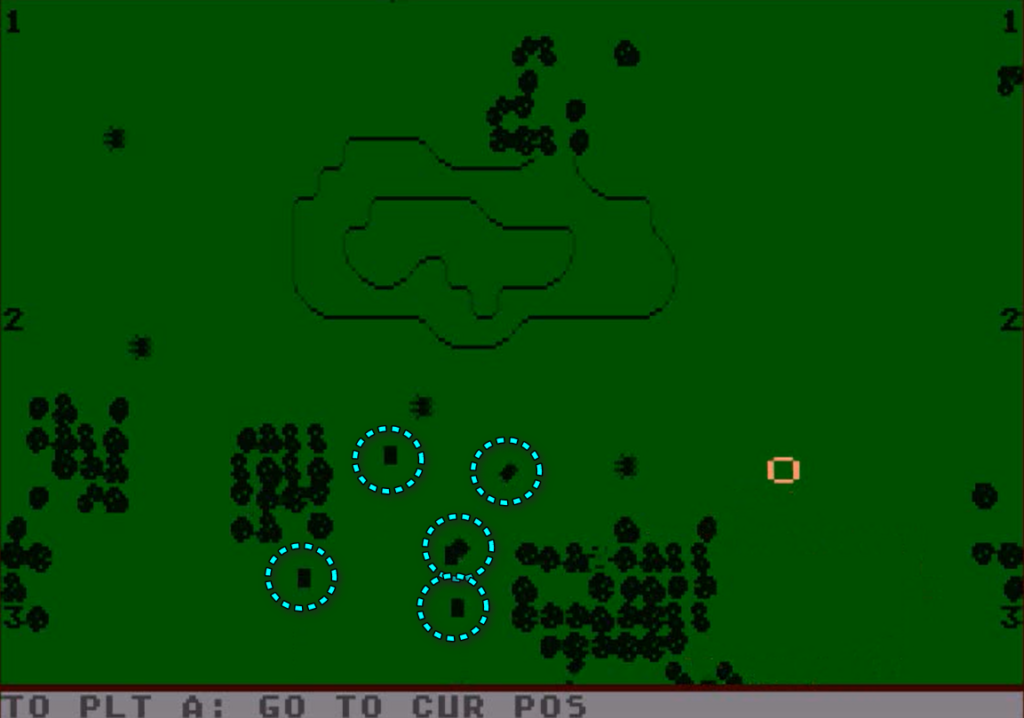
One of the two infantry platoons dismounted. Maybe both of them actually, I could not see very well. Then, half the transports started to climb the hill. Once they reached the top, they spotted the first enemies :
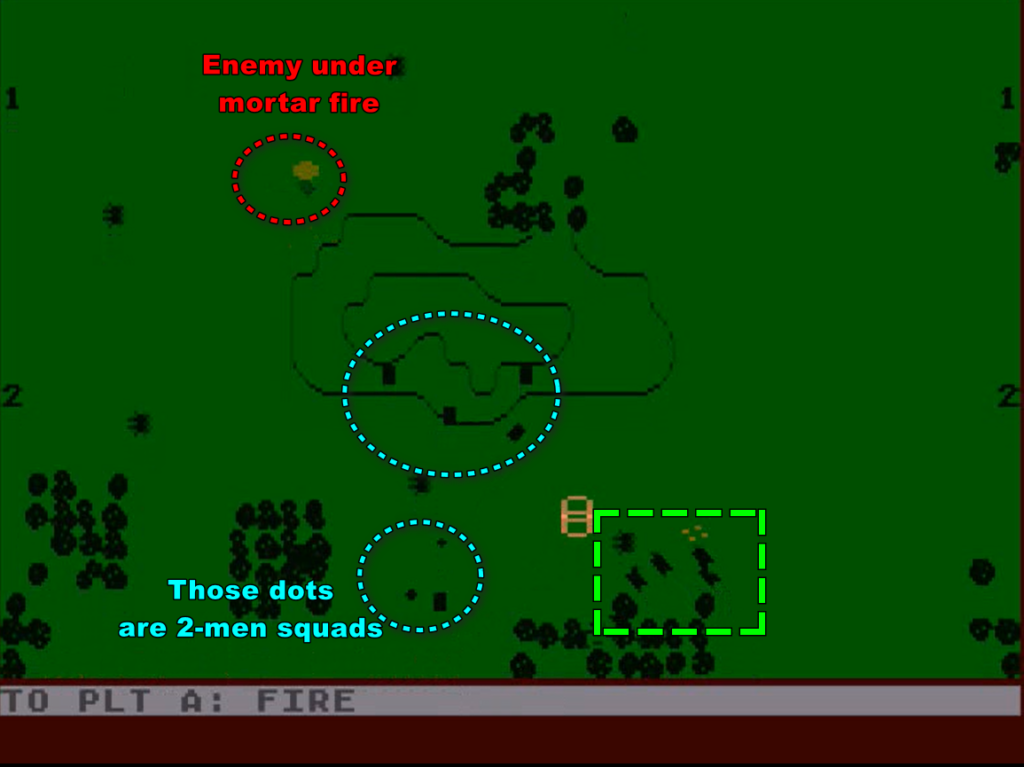
Some of the lads had mortars, and they started lobbing shells left and right. They quickly found out that there were some enemy vehicles in the forest on the other side of the hill and they sent their explosive deliveries there as well.
As for my platoon, we were hidden in the forest, but not hidden very well, as it soon became apparent. Enemy mortar shells fell on our position. Or maybe it was enemy tanks engaging us – I have no idea.
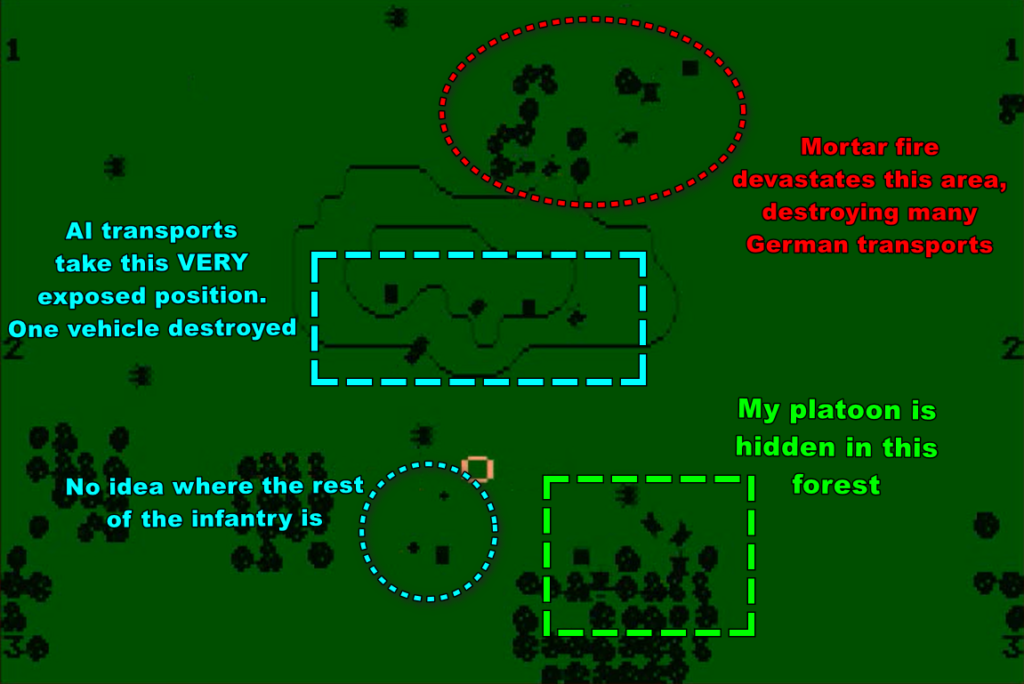
One of the perks of being a platoon commander is that you can order individual units of your platoon around. I ordered some of my tanks to move to the left, others to move to the right, and in doing so I realized I had already lost one tank. No one had told me.
Eventually, the enemy stopped aiming at my tanks. I was pretty happy with being safe again when I noticed that our brave infantry was rushing across the hill, probably to reach the forest on the other side. I had to help, and my three remaining tanks climbed the hill to provide covering fire. Or an alternative armoured target, at the very least.
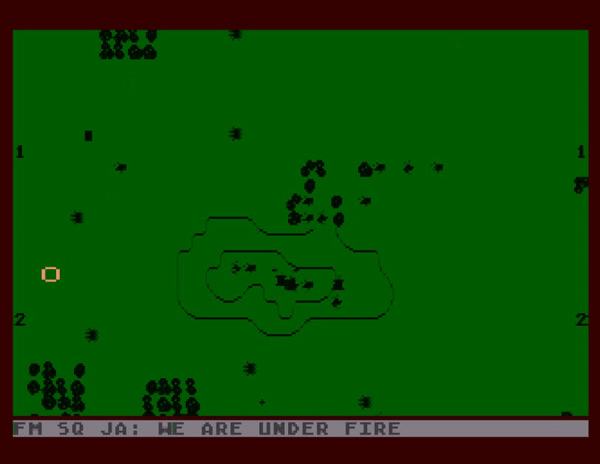
While giving the order to occupy the hill, I realized I had lost one more tank. I wish my soldiers consistently reported when they are killed.
Anyway, once most of the men reached the forest, I moved downhill and joined them. At this point, I had no idea whether they had all died or if the forest was clear from enemy infantry – everyone involved in this battle had the exact same colour as the trees.
It turned out it was the latter: the forest was safe. I positioned my two remaining tanks – you may notice a pattern there – at the edge of the forest, engaging more enemies, including two tanks on my front-right.
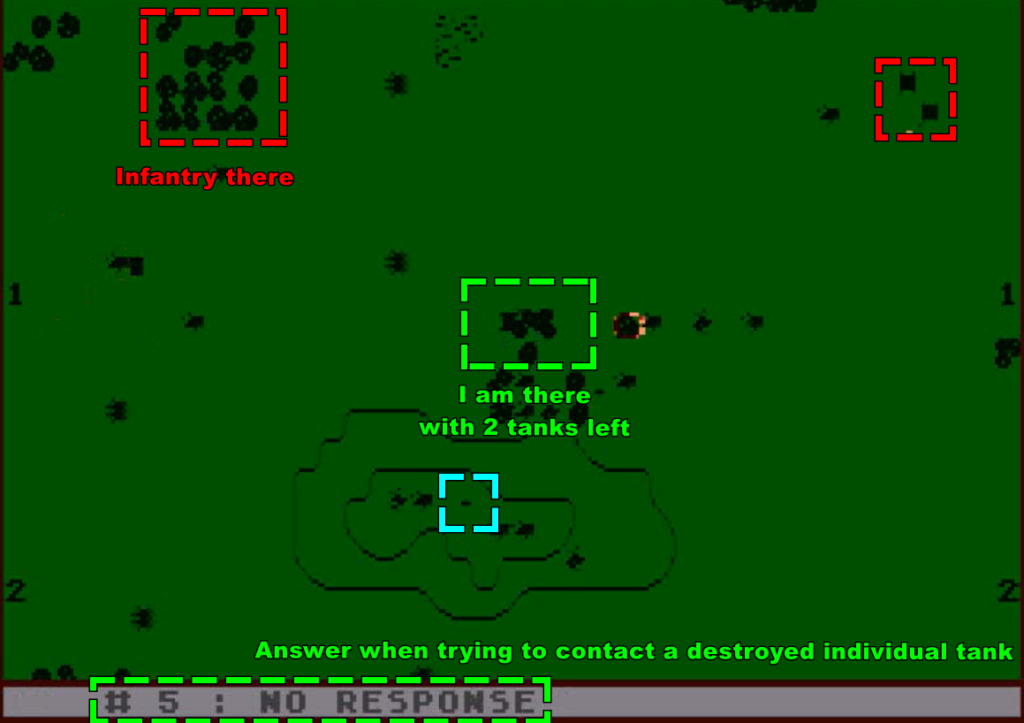
In this last tank vs tank combat, I lost my last fellow tank, so that was just me and my crew giving me weird glances. But there were no more enemies in sight. Everything stood still.
Our infantry was not moving either. Someone had to do something. Why not me ? Despite my crewmen whining and telling me it was a suicide mission, I approached the last uncleared patch of land…
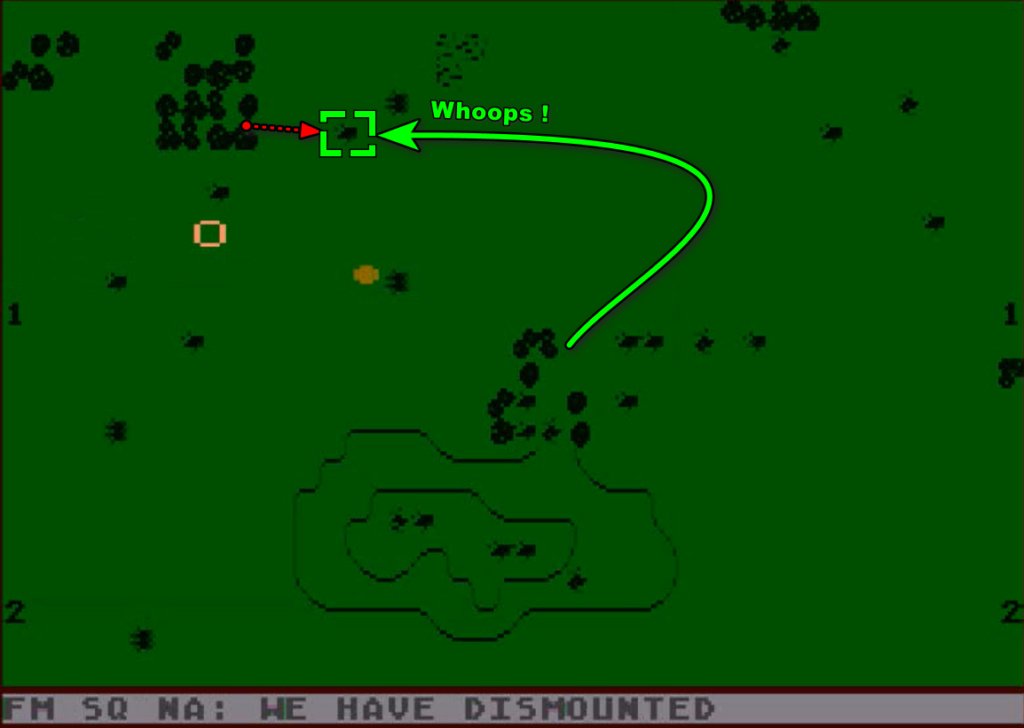
… and that’s how I lost the last Comet. But I could leave my tank just in time, unlike my unfortunate crew.
This was a setback, but not the end of the battle. One of the Bren carriers was staying a bit in the back. I immediately commandeered it, and used it as a scout :
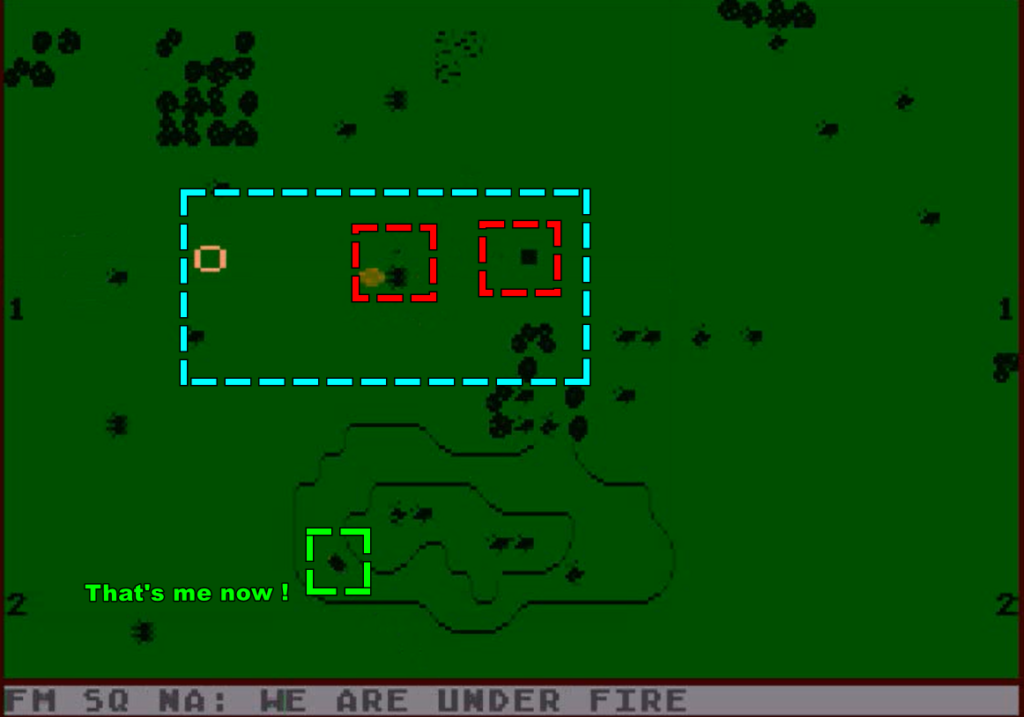
Now that our last tank had been destroyed, the Germans were pushing hard with their infantry and remaining half-tracks…
... but our mortar (and possibly some infantry we had left in the forest ? I have no idea) delivered accurate fire, destroying them to the last man.
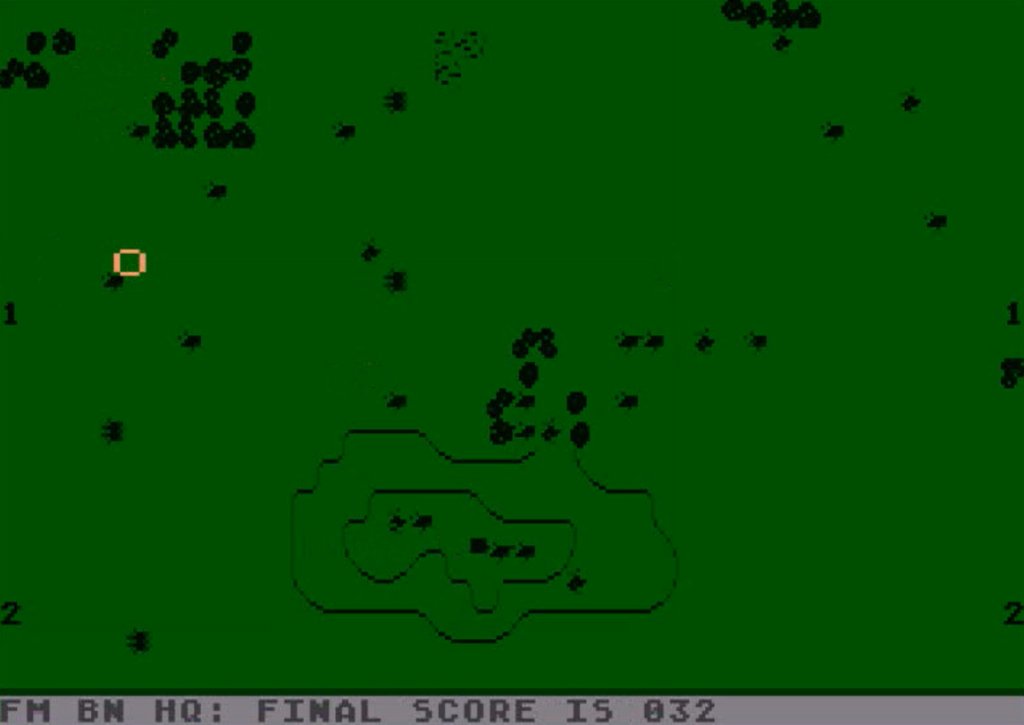
Well, this was a great victory to report to my superior, even though they were certainly mildly surprised to see me leave with 5 tanks and return on a Bren carrier. Those things happen.
Part II : Company Commander
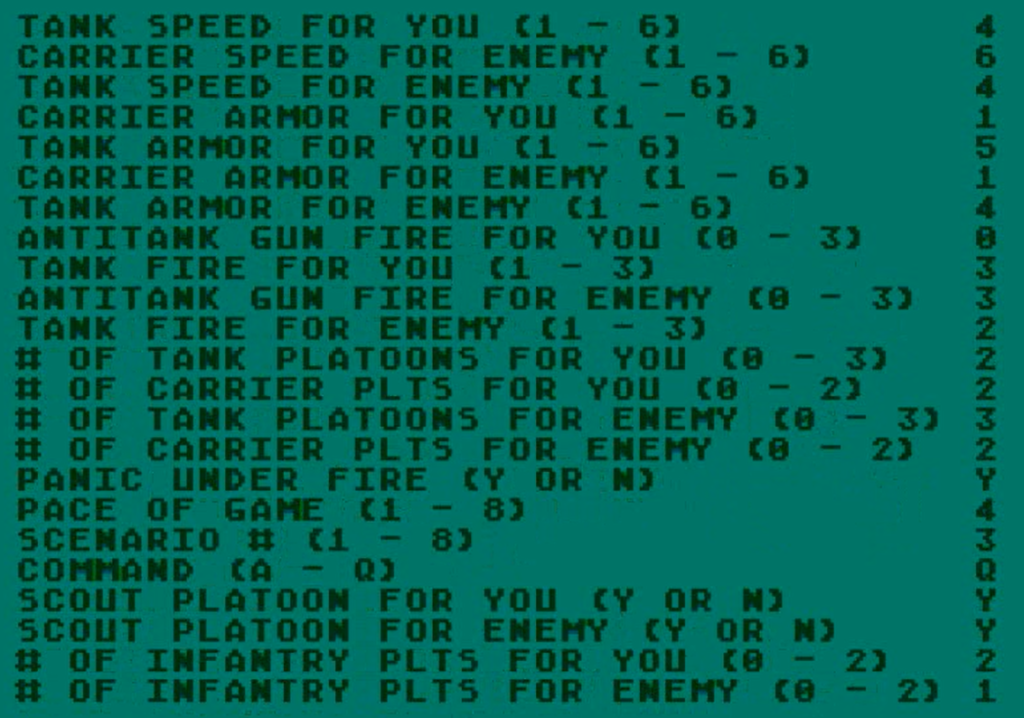
What I just described was my first and only battle during World War II. The armistice was signed shortly thereafter. Still, I had displayed maybe not tactical acumen but at least bravery, and I quickly climbed the ranks.
In 1975, when the Soviets decided to finally dash across the Fulda Gap, I was still in the Forces – though close to retirement. This was my second battle – and given my seniority I would command all the forces in the area. That was not much : 2 platoons of 5 Chieftain tanks, two motorized infantry in FV 432 Armored Personal Carriers (APC) and one more FV 432 scout platoon.
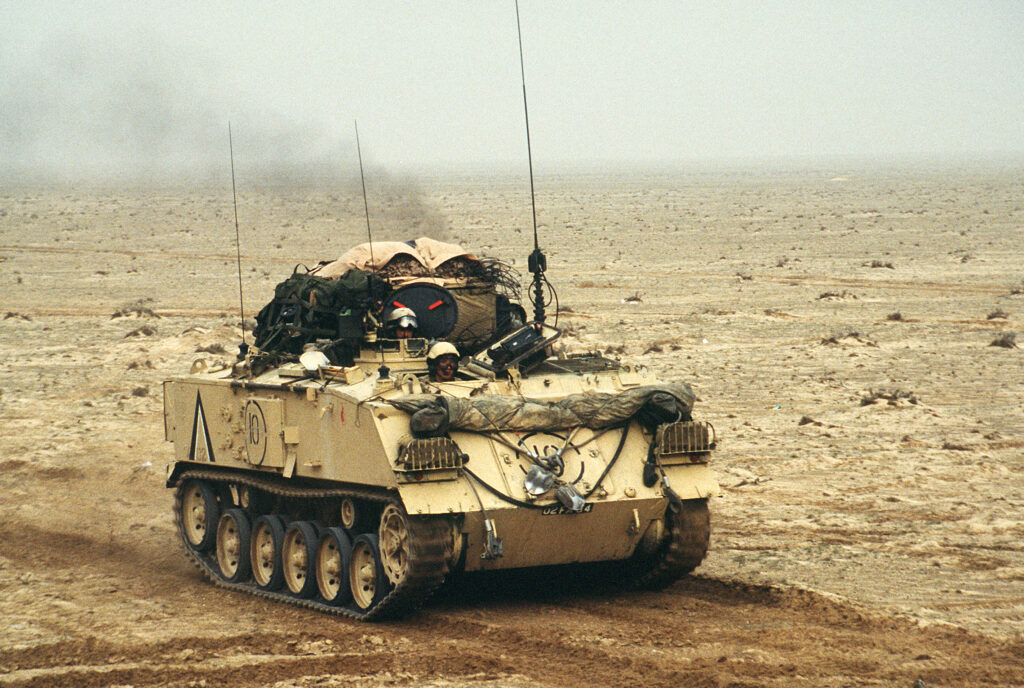
There was a hill North of our position, and North of that hill it was mostly open ground until another wooded hill. The only cover between the two hills was a small patch of forest. My initial supposition was that the enemy would occupy the Northernmost hill – a position difficult to assault.
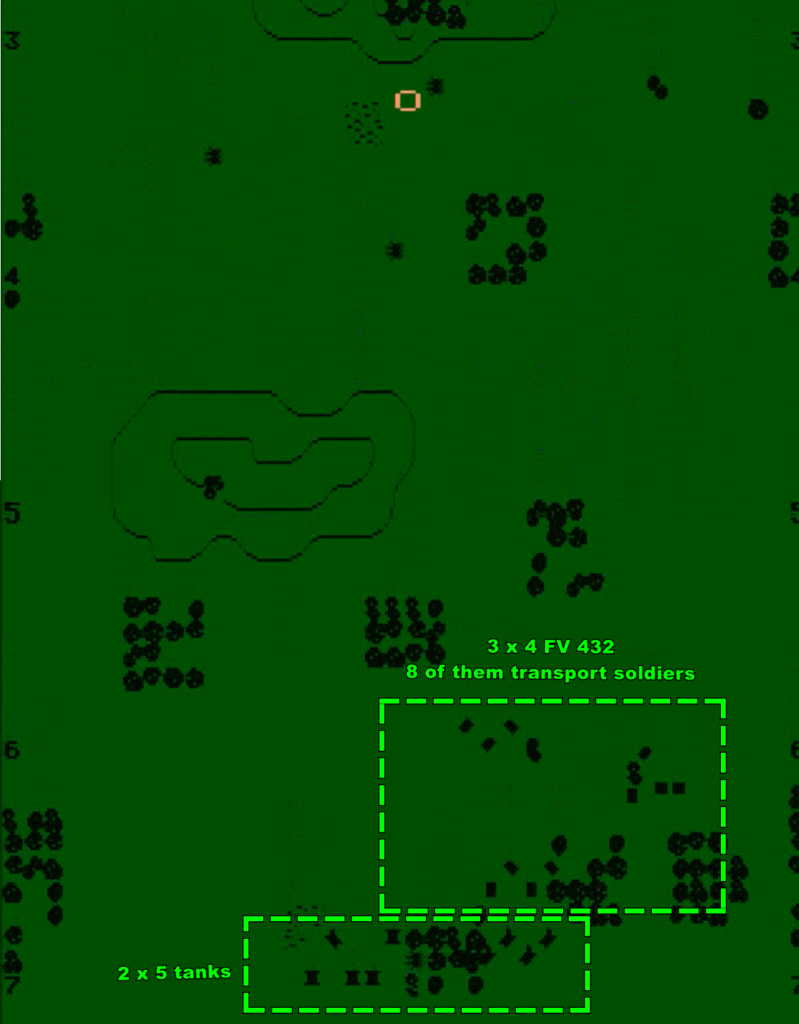
I had a simple but incredibly effective plan. I ordered my scouts to hurry up and occupy the middle forest. If they reached it first, I reckoned, I could order them not to engage the enemy and spot it for the rest of my force while remaining undetected.
As a company commander, I was not allowed to control individual tanks or APCs anymore, but I could still detach 2 units (in total) as “patrols”. An APC was detached to occupy another patch of forest to the right. Meanwhile, I would deploy mortars behind the hill and tanks on top of it !
I still think the plan was great. Best plan in decades. It had just one flaw : some enemy BMP-1s were hidden behind the FIRST hill !
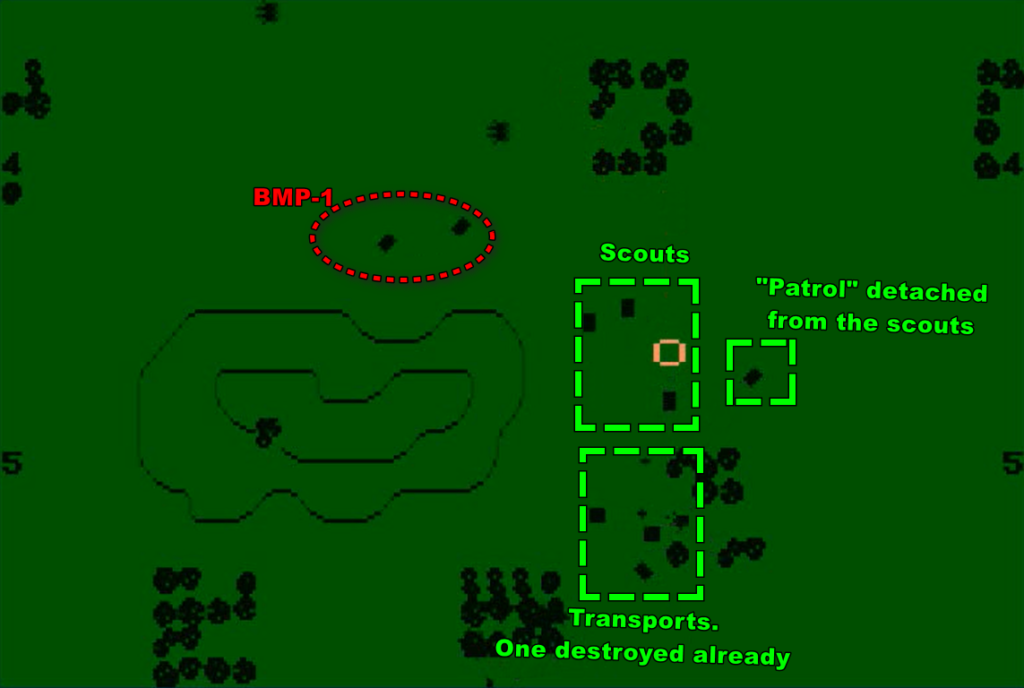
One of my transports immediately blew up – probably destroyed by an enemy BMP-1 as those pack a lot of punch. Soon thereafter, I lost 3 more APCs. All my infantry rushed outside their transports. Meanwhile, the enemy mortars deployed smoke, to cover the retreat of the BMP-1. To no avail : my tanks arrived and annihilated them.
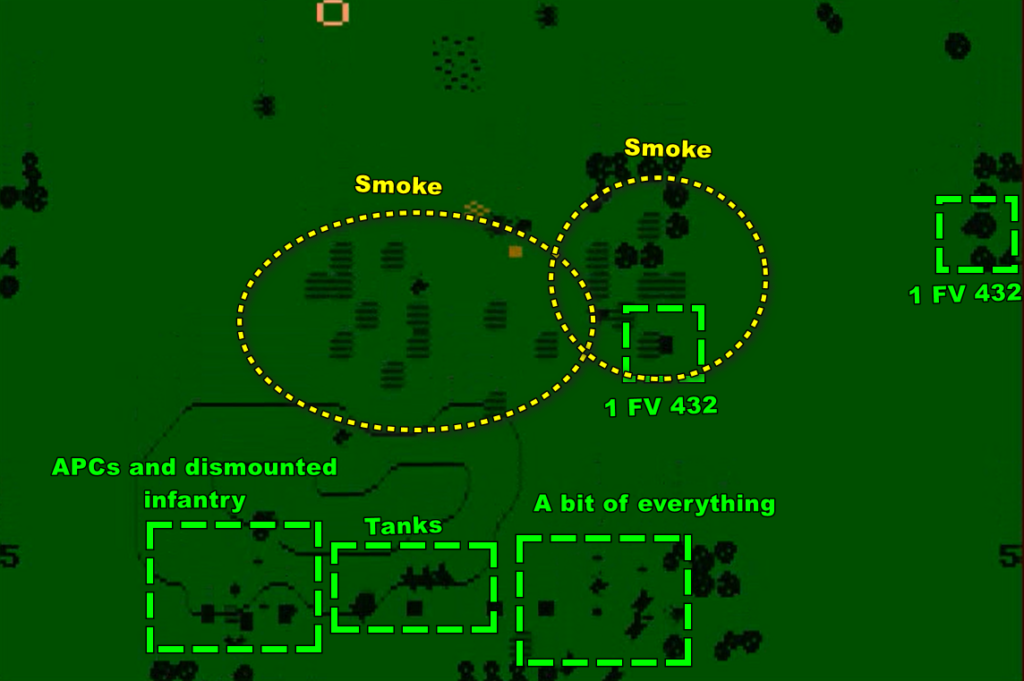
With my scouts properly positioned and my infantry dismounted, I could move to the next part of my plan : infantry assault, with my tanks in the back provided covering fire, shooting on those enemies engaging the advancing infantry.
Let me tell you a bit more about infantry. There are 4 kinds of infantry :
- Mortars – these of course would stay behind the hills,
- Riflemen – the easier to sacrifice. They would lead the attack,
- “Security”, also known as machine-gunners, they would be in second,
- Anti-tank, they would advance behind the riflemen and the security,
Unfortunately, fate did not let me execute my plan. Before my men ever reached the top of the first hill, the enemy infantry assaulted my position :
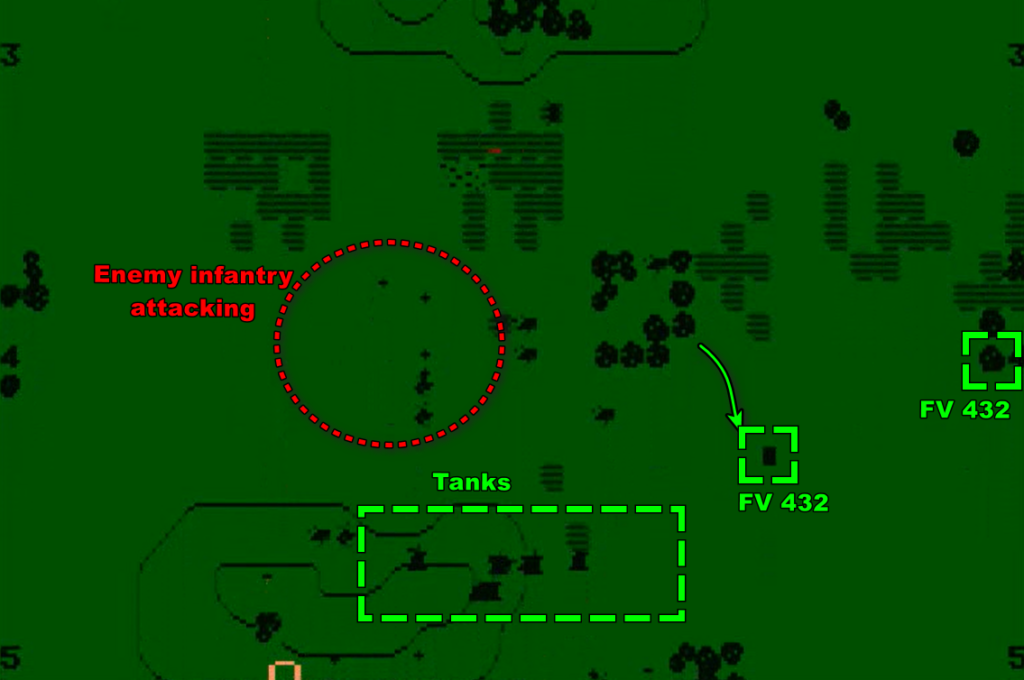
What a devious and ruthless plan from the Soviets : they were sacrificing their infantry by sending it forward to force me to reveal my defenders as I was shooting at them. Once revealed, my tanks were easy prey for some hidden Soviet units. War is Hell !
I am not sure what exactly was shooting at my tanks – possibly BMP-1 as unlike the FV 432s the BMP-1 have powerful anti-tank weapons – but what was sure is that I lost a lot of them. By the time the enemy assault was stopped, I was down to 4 tanks out of 10 !
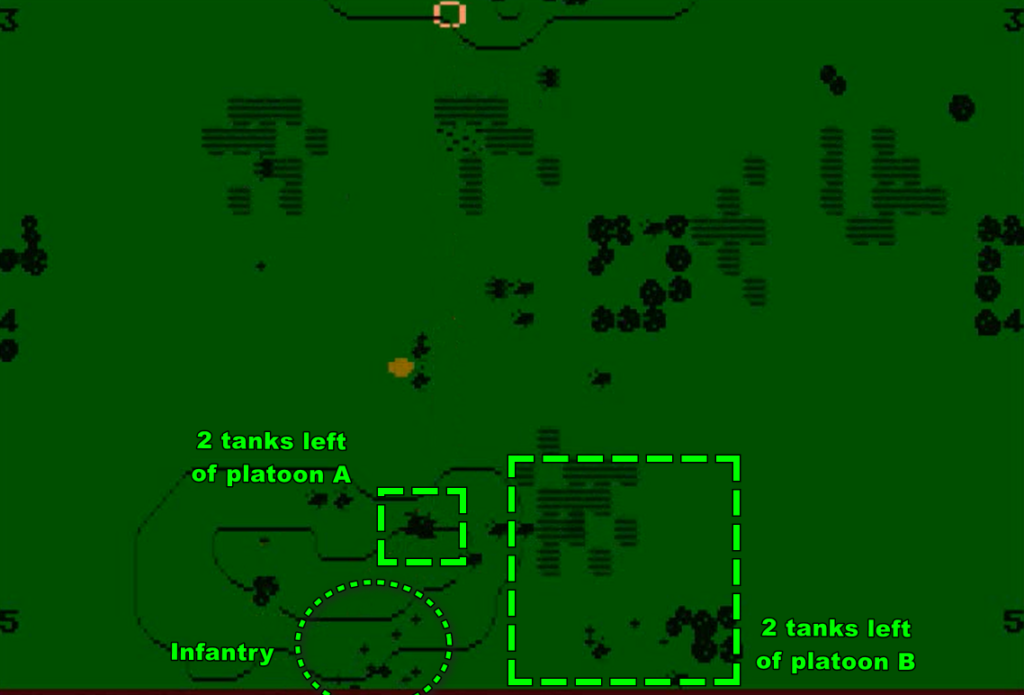
And then, the enemy T-62s attacked !
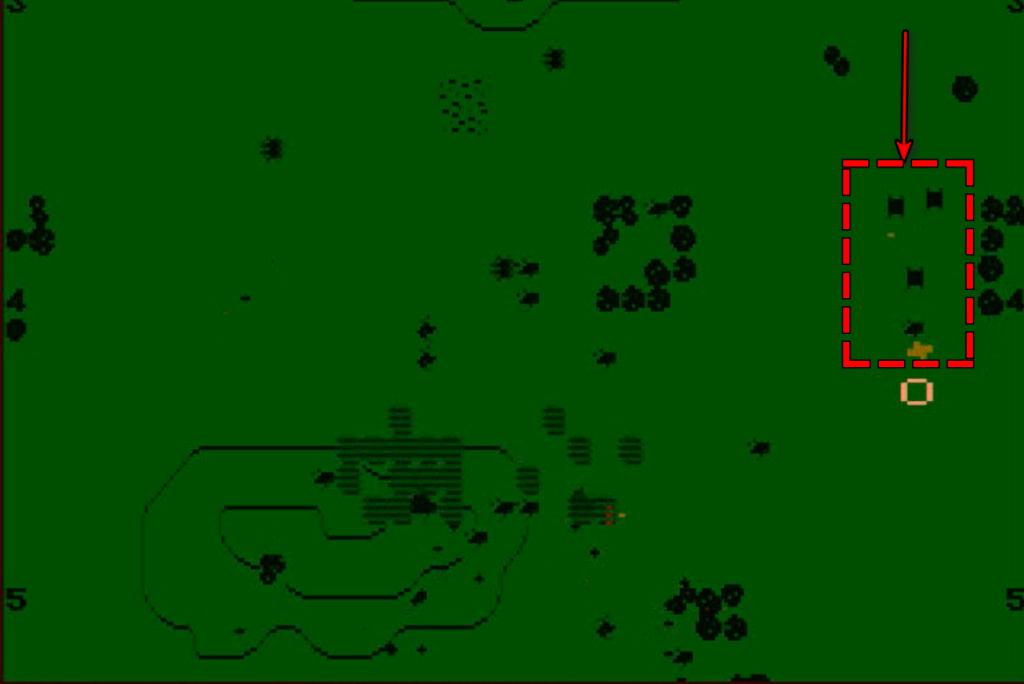
This was totally unexpected. There were at least 2 full platoons of 5 tanks attacking, if not 3 ! I managed to destroy many of the attackers, but I was way too outnumbered ! Soon, I had no more tanks at all !
I tried a last ditch counter-attack with my APCs. It worked back in 1945 !
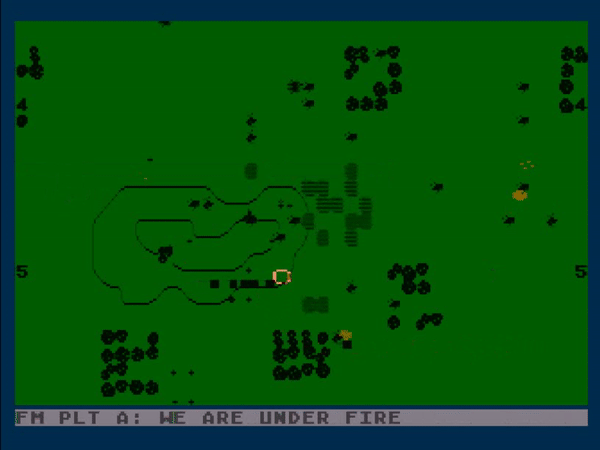
But they were all destroyed. I was defeated. And then booted from the military for incompetence…
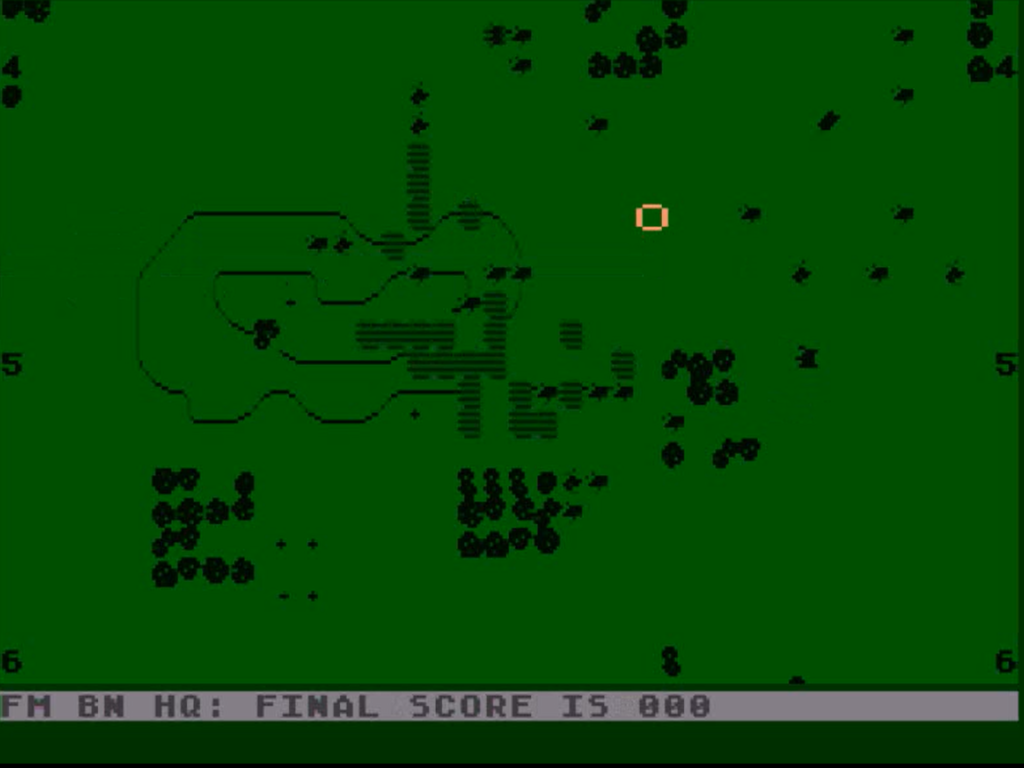
Well, you wanted my version ! My plan was perfect, I was just unlucky !
Rating & Review
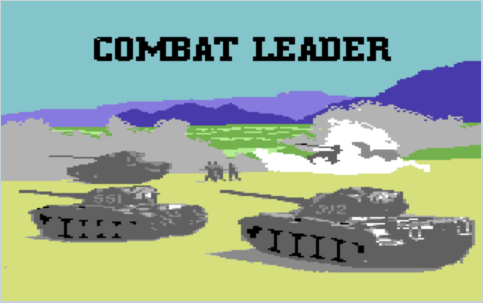
Combat Leader, designed by David Hille and published by SSI, USA
First release : July 1983 on Atari,
Tested on : Atari emulator
Total time tested : 6 hours
Average duration of a battle : 30 minutes
Complexity: Simple (1/5)
Would recommend to a modern player : No
Would recommend to a designer : No
Final Rating : Totally obsolete
Ranking at the time of review : 37/69
Combat Leader is probably the first of a long, long list of real-time “modern tactics” games, ranging from the “beer & pretzels” (eg Nival Interactive Blitzkrieg in 2003) to the more realistic (eg Veitikka’s Armored Brigade in 2008). It is also the first (real-time) game where the AI can control part of your forces during battle – something I had to showcase.
Very little is known about David Hille ; Joel Billings told me he does not remember anything about him, and Hille is only known for another game (Battalion Commander in 1985). Wherever he came from, Hille must have been a boon for SSI, given how perfectly Combat Leader lined up with the RapidFire collection : the game is fast and relatively easy to understand.
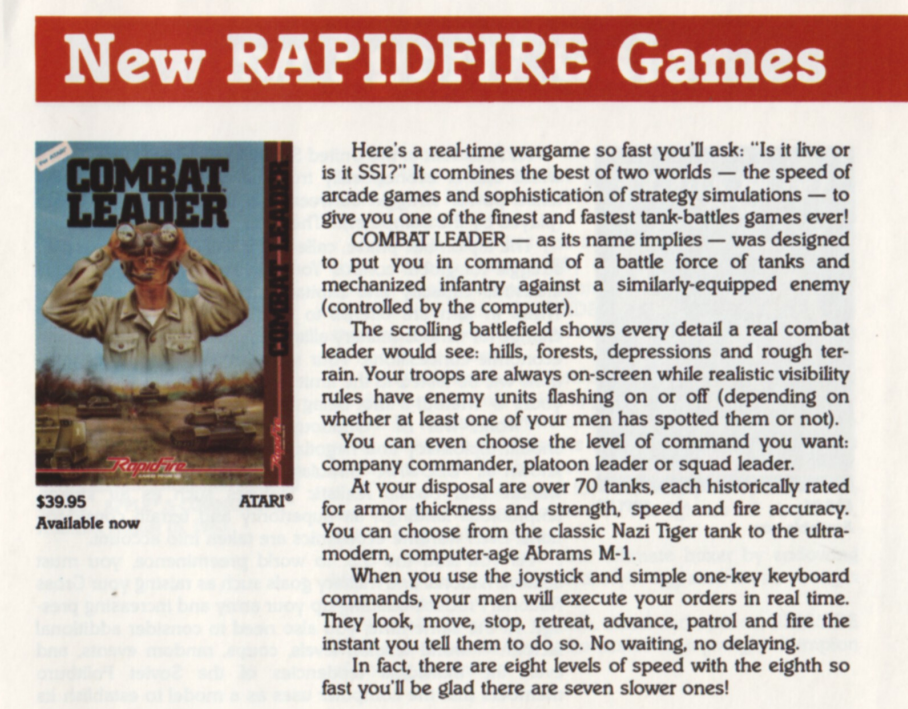
Combat Leader‘s only commercial disadvantage was that it was never made available on Apple II, possibly because the Apple II did not handle scrolling very well. Instead, it was originally developed using Assembly language for Atari, and later (winter 1983-1984) ported on Commodore 64 – as far as I could test the two versions are extremely similar.
Having covered the tiny amount of background information I had, I can move to the review.
A. Immersion
Very poor. Playing real-time, of course, makes Combat Leader feels much less abstract than any of Roger Keating or the Tactical Design Group’s turn-based games. There is also something realistic in the way the units move and fight and in the different levels of command – the ebb and flow of a combined arms battle are definitely there. Unfortunately, the game is also too generic to be immersive.
Combat Leader does not have as much historical detail as other SSI wargames. The battles could happen in Poland in 1940 or in the Golan Heights in 1980. Sure, the scenario editor allows you to choose the speed, firepower and armour of the vehicles of each side, but stats are rescaled between eras so what you really choose are relative stats. Furthermore, there is only one type of tank and one type of transport (+scout) per side, and of course during battle you will still be pushing the same pixels around every time. And as you could see those pixels are not pretty : the game only uses black & green, with some red for the explosions and grey for the smoke. “Destroyed vehicles resemble nothing so much as cockroaches” quipped Evan Brooks in a 1991 review.
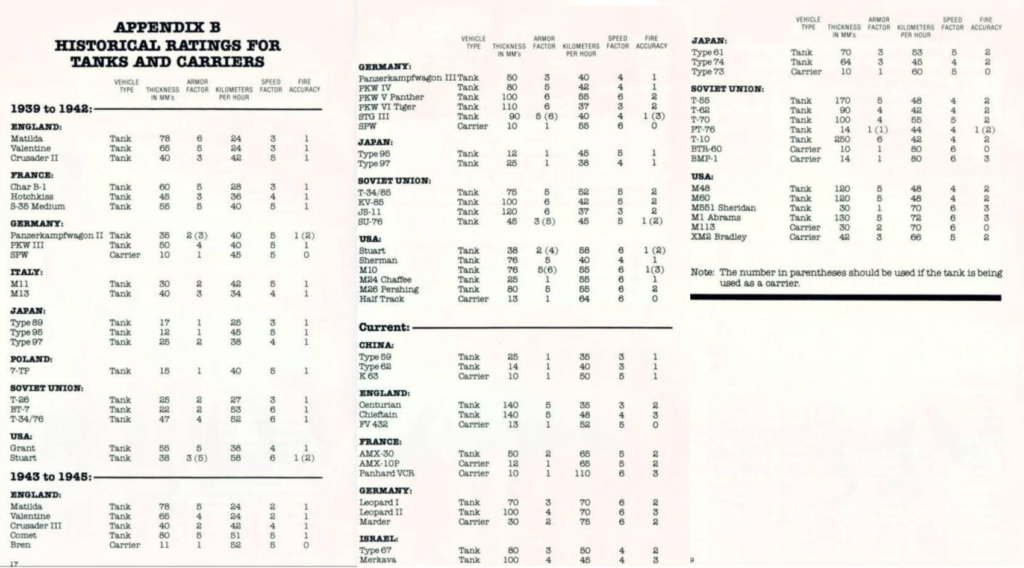
B. UI , Clarity of rules and outcomes
Terrible. The controls are easy, but the game is pure chaos : the colour choice makes it very hard to understand where your own vehicles and even worse your own infantry are. Even if you spot your infantry, you have no way to know whether they are riflemen or mortars, firing or idle, under fire or undetected. The game will send you increasingly out-of-date reports as the messages are all queued and then remain on the screen for a fixed time : it is not rare to read the report of one of your now long-destroyed units : “I am under fire“. And that’s a flaw, not a feature.
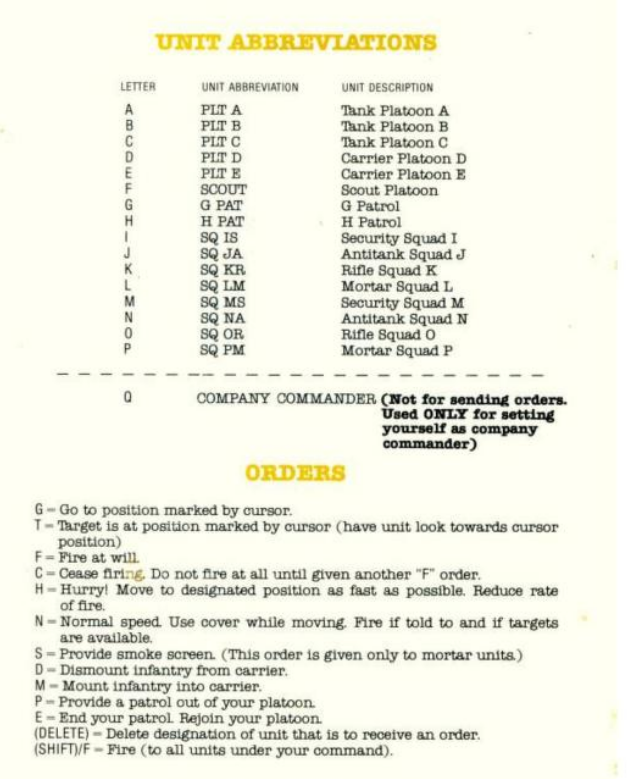
As for combat, the results of gunnery exchange feel random, especially since I am generally unable to understand who is shooting who and whether they hit anything. Overall, a bad experience.
C. Systems
Poor. Combat Leader was the first WW2/modern real-time tactic (RTT) game so it did not need to do anything fancy. Tanks are armoured and have powerful long-range guns. Anti-tank infantry can surprise and destroy a tank when hidden in forests or depressions, but their range is pathetic. Non-anti-tank infantry is worthless except to kill infantry. Transport vehicles transport grunts and can also kill infantry, and depending on the balancing you choose, even tanks. Mortars act as artillery to lay curtains of smoke and punish campers. It has been done hundreds of times, it is poorly balanced (riflemen are useless, mortars overpowered) but Combat Leader did it first.
The one feature that’s different is the capacity to move from company (HQ) commander to platoon leader. This feature was rarely used in other RTT and playing Combat Leader it is easy to see why : it absolutely does not work. The instant you decide to take command of a platoon, the AI goes all “I am the Commander now“, cancels all your earlier instructions to the rest of your forces and moves toward the enemy. You will have to either keep up or let the AI lose. I guess it is fun the first time, and at least this feature is entirely optional.
D. Scenario design and balancing
Good The game allows you to create your own scenarios with a large number of tools. You can choose the number of units for each side, their stats, and a few other rules like the range of anti-tank infantry and whether units can panic. Very different landscapes can also be created by the scenario designer (in which you choose the density of forests, hills, …), though this is limited by the lack of urban warfare (or of any building, really) and by the fact that there is only one type of tank and one type of APC by side.
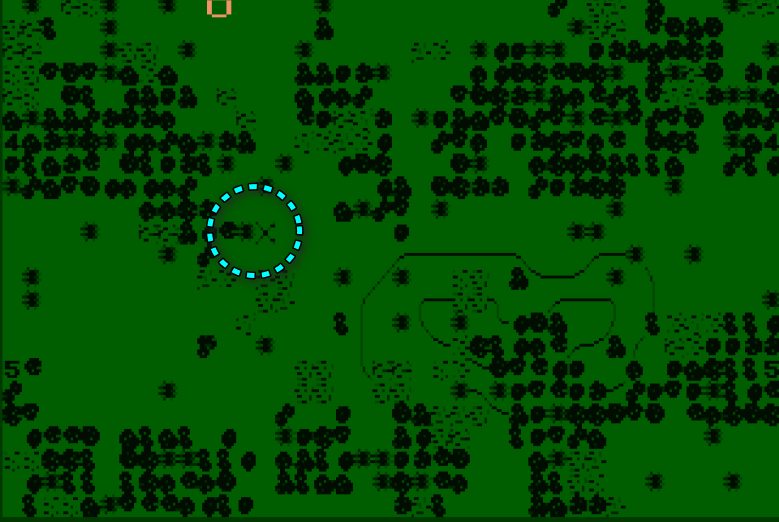
I was impressed by the AI. It is good, and manages to employ different strategies : sometimes it turtles in its starting area, sometimes it pushes one concentrated stack of troops and sometimes it advances on a wide front with tanks in the back. It also knows how to use smoke to break lines of sight and cover its advance – even if sometimes it decides not to use it at all. It might not be the best AI I have encountered on this blog (the Eastern Front 1941 AI was better), but it is the most interesting to play against.
The scenario designer and the randomness in the AI’s strategy and its initial placement create some significant diversity. I am not going to claim that every battle is different – there is only so much that you can do with forest and hills – but in the early 1980s it was probably one of the most replayable games available.
E. Did I make interesting decisions ?
Yes, from time to time. “Should I hold this patch of forest or leave it to engage the enemy transports ? Should I deploy smoke ? Should I advance my infantry ?” Unfortunately, the game is also often too confusing to take enlightened decisions.
F. Final rating
Flawed and obsolete. Combat Leader is like Chris Crawford’s Legionnaire: revolutionary at its release, but a terrible experience for the modern gamer. It is dull due to the lack of immersive features, maddening to play due to its terrible UI, and does nothing that was not done much better again and again in the following years. I can only recommend it to historians.
I find Combat Leader better than TAC. Both were first in their respective categories, and both are plagued by UI issues, but Combat Leader is much faster to play, and offers way more tactical situations than its turn-based counterpart.
Contemporary Reviews
As expected, Combat Leader received absolutely outstanding and unanimous reviews. The Computer Gaming World review in October 1983 is a long string of laudatory adjectives, with the mention that the game is also multiplayer because “you and your friends can team up against the computer. You can each take a platoon, select someone to be the company commander for your side, and then pass the joystick around.” Well, that’s like claiming Sopwith is multiplayer because of that one time my brother played it and let me handle the B key to launch bombs.
The other reviews I could find go in the same direction (except for the multiplayer part) : Russel Sipe in Games Magazine (December 1983) calls the game “outstanding” : “Several designers have flirted with the idea of combining strategy and arcade skills in a single game. In Combat Leader, David Hille has fully realized this idea.” In Antic (December 1983), Edward Bever admits that the game is “not the definitive simulation of modern tactical warfare” as it has “simplification and inaccuracies concerning armament organization“. Still, “it is an engrossing and enlightening game“. Gary Fields for Commodore Power Play sings the same tune as late as December 1985 (“If I could own only one strategy game, this would be the one“).
Internationally, from the small sample I could check the reception was more mixed : the French Tilt gives it 5 stars out of 6 in its November 1984 issue but the British Zzap! 64 covers Combat Leader in its very first issue (May 1985) and gives it only a 63% rating for “value-for-money”.
That isolated British review did not stop Combat Leader from being a major success with 16 000 copies sold in the US alone. David Hille went on to work on another similar game (Batallion Commander) that for once I am not looking forward to play : reviews were pretty bad for that second game. What I am looking forward, though, is the first British entry in modern warfare real-time tactics : Stonkers in November 1983. We’ll get there.
A string of personal events delayed me those last two weeks – apologies for this – but the pace of updates should be back to normal (a bit more than one update a week) for the foreseeable future.
10 Comments
I was starting to worry!
I don’t even think that I met a RTT game that I wholeheartedly enjoyed, they always feel off for some reason. Graviteam has a shitton of excellent ideas but the implementation is clunky: likewise Armoured Brigade. Dropping the simulationism makes at least for fun stuff, like CoH.
Also, thank you for reminding me about Blitzkrieg, when you reach it in 15 years I have a couple of horror stories about that specific piece of eurojank.
I find it very hard to properly balance RTT. If you have a lot of units, then you just buzz around the battlefield too fast to have real fun (the Wargame series). If you have only a handful of units, then losing one or two key units is game over (the Theater of War series). Some of these games also do the mistake of being tedious on micromanagement (eg the game has an individual inventory for every dude in every single squad).
Most battles can be cheesed by artillery (Blitzkrieg famously, though some of the data disks manage to have a great level design avoiding the issue). Scenario designers also love to be cheap on the AI and pit you against overwhelmingly superior forces (eg Syrian Warfare and Sudden Strike)
The Wargame series might be the series I spent the most hours on in total, but in multiplayer I prefer what is called in Wargame linguo “tactical” where each players only has 10 or 15 units to manage, instead of dozens of them.
Apart from it, my favorite “modern” RTT are Armoured Brigade and the Close Combat series (+ the Firefight “low-cost” alternative). I find they have just the right scale for me.
I have not played a lot of Achtung Panzer/Graviteam – basically tutorial and another battle.
I didn’t even know that Wargame MP had a “tactical” mode as a gentleman’s agreement. Funnily enough, I did the same with friends, with purposefully gimped decks to avoid spamming/unicorns.
(I did the mistake and checked how many Blitzkrieg exp packs and games there are, by the Gods it’s endless. How the hell an engine completely improper for RTT manage to spawn such a …. ah, the answer is Russians)
I understand where they were coming from, but there’s nothing worse than seeing friendly AI just charge headfirst into enemy fire without even the slightest bit of concern for their well-being.
The ability to set the game in every era reminds me a little bit of Command HQ, though they don’t really have anything in common besides that and being in real-time.
To be fair, the AI has a lot of concern for its well-being. It immediately leaves the opening area but then usually moves smartly, from cover to cover, with mortar support, … Basically, your AI is just as good as the opposing AI is strong ; you just have no control on it and no idea about what it is doing. I am actually wondering whether the AI of your side can choose the “turtling” strategy. Probably not as it would be extra frustrating.
There is also the fun part when you control infantry – according to the manual the AI can force YOUR infantry squads into their transport vehicles. Never happened to me though.
Interesting, guess it just seems stupider since, as you say, you have no idea what its doing.
The other part is also interesting, since mechanics like that tend to not be very common in strategy games. At least modern set games, I know medieval and some sci-fi games use the mechanic in a few places with dedicated units.
Wow, that’s really cool you can choose your level of command. Wargamers of the time must have swooned over it. Really using the computer to its full potential. Why worry about those lame-o APCs and dull infantry when what you really want to do is command the tank platoon on your side? Leave it to the computer! It’s what they do best, boring detail work.
Also pretty good you got beat by the computer player. Always a good sign.
It is a good balance between strategy game and arcade game. And real-time too! Perfect! Exactly the sort of thing that the Atari 800 was designed for.
I usually (not always) win in a perfectly balanced battle, but if I give the AI slightly better anti-tank weapons for their transports and infantry (the two go together), I am beaten more often than not. In the AAR, I went a bit overboard :).
“Sopwich” > I imagine you meant Sopwith.
Thanks. Edited. It will be our little secret.